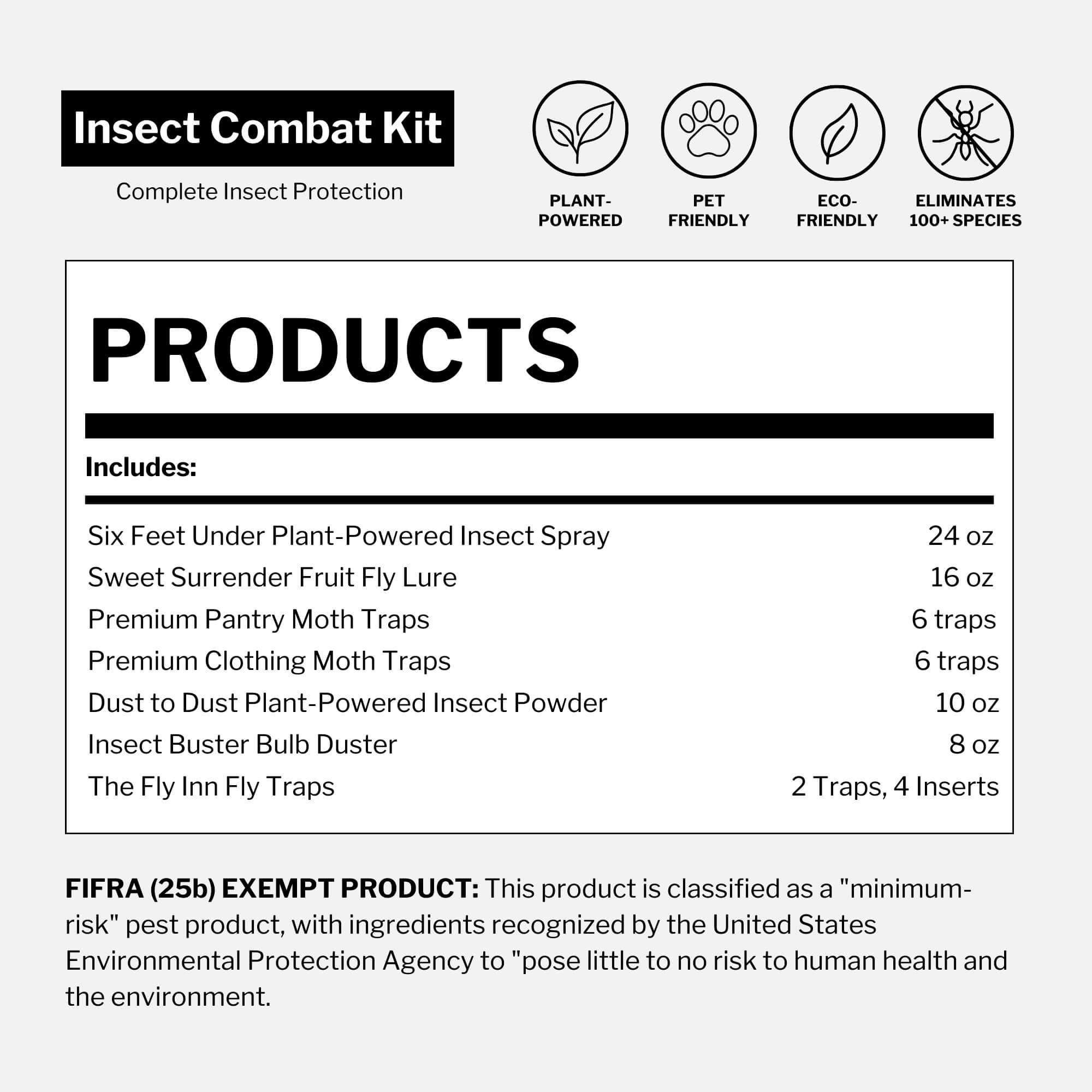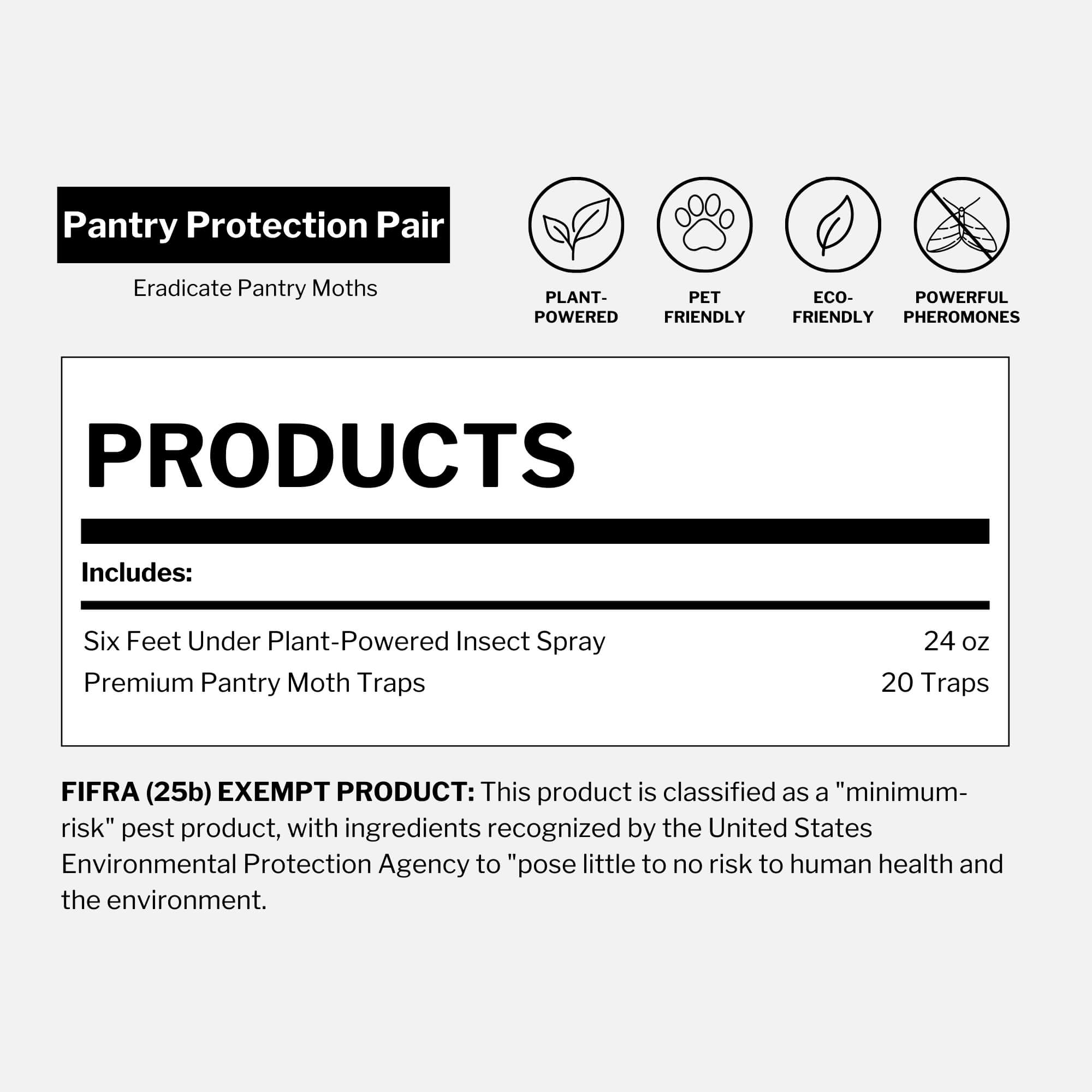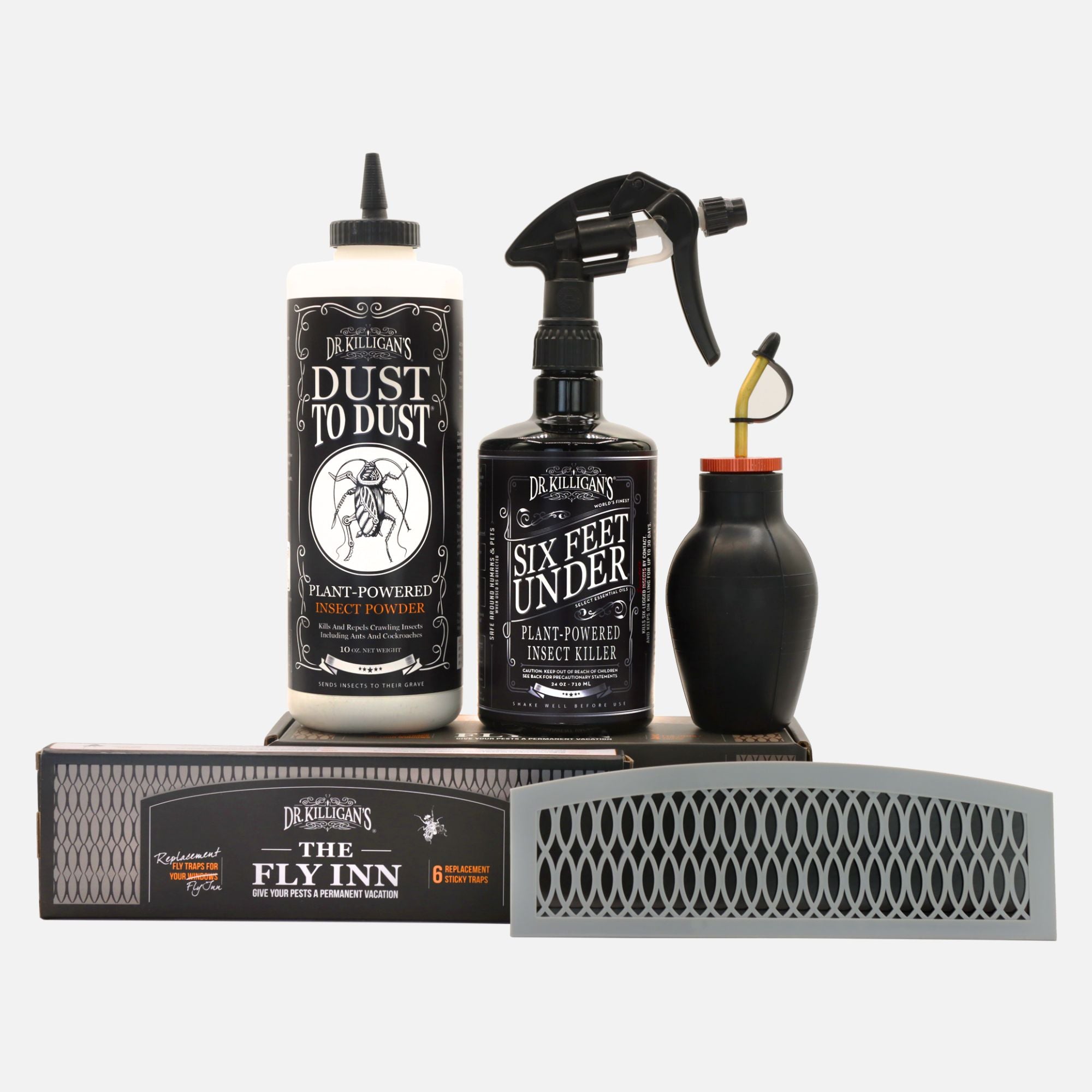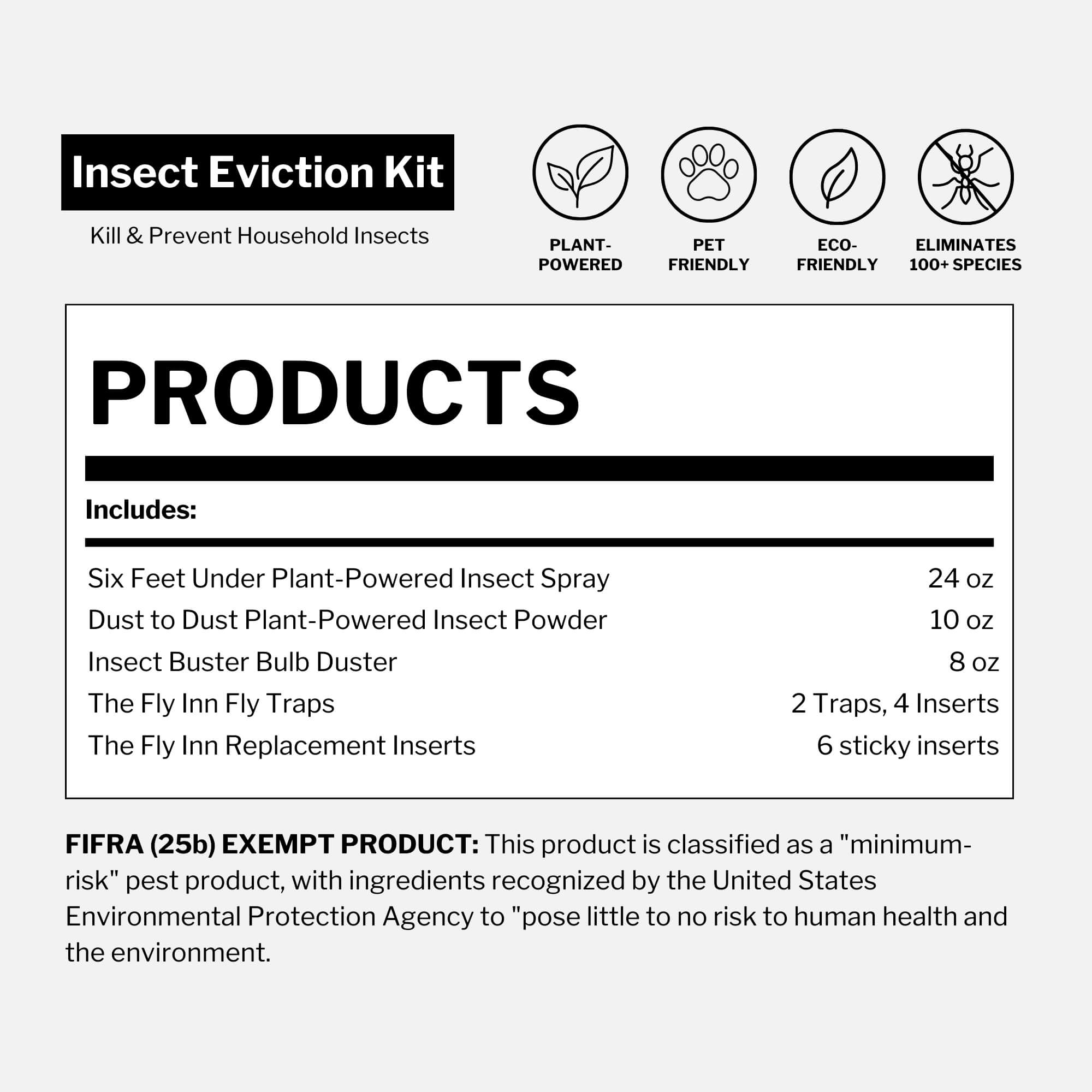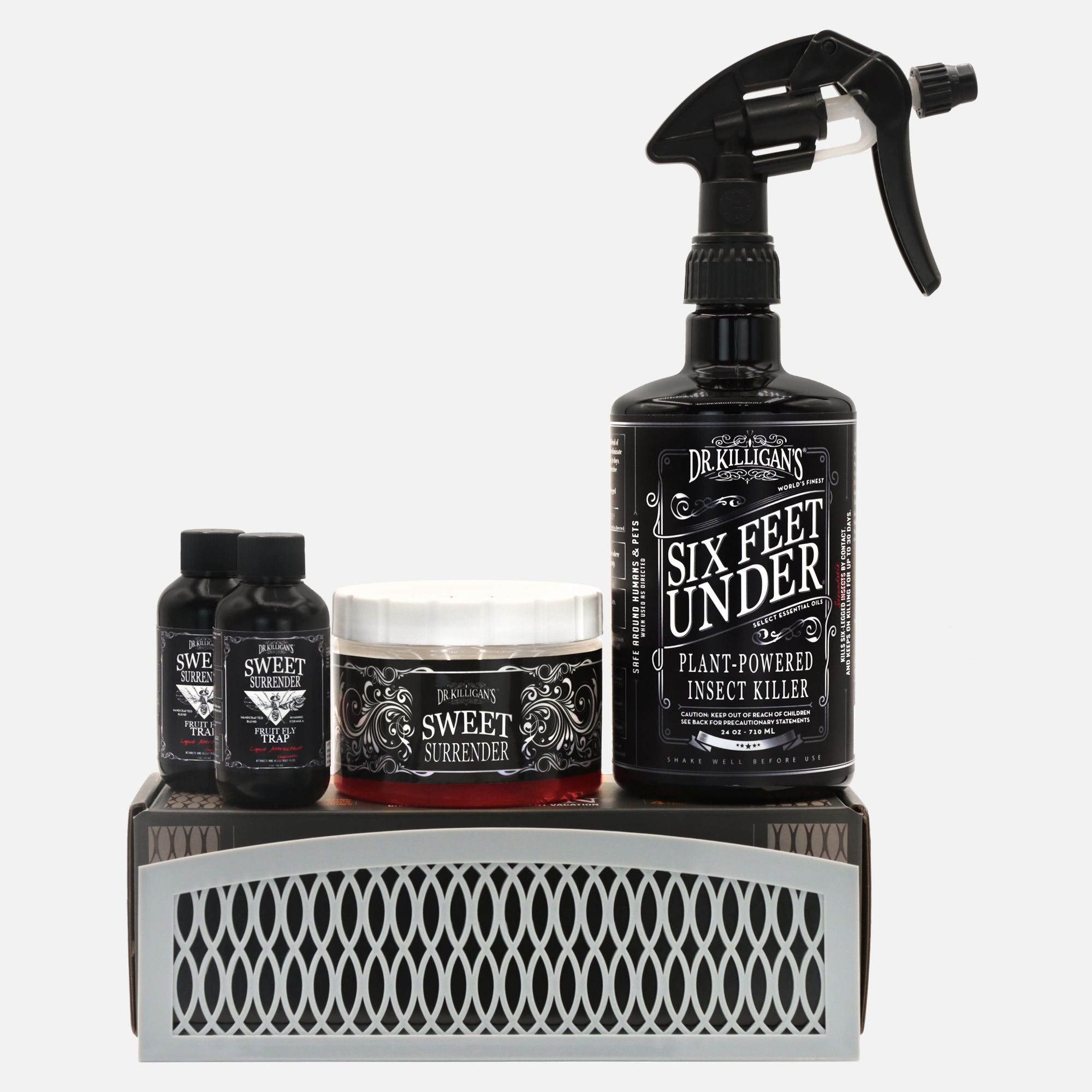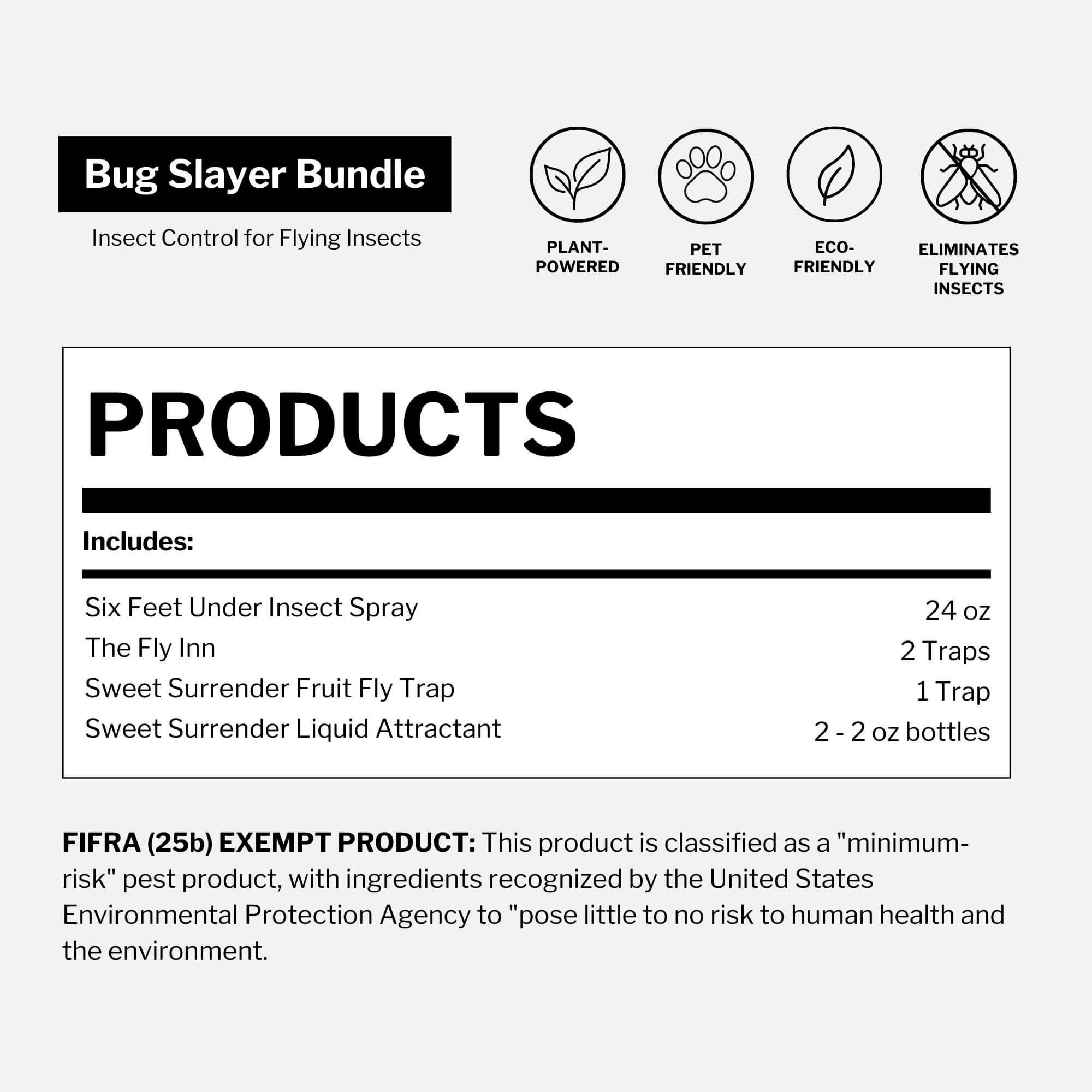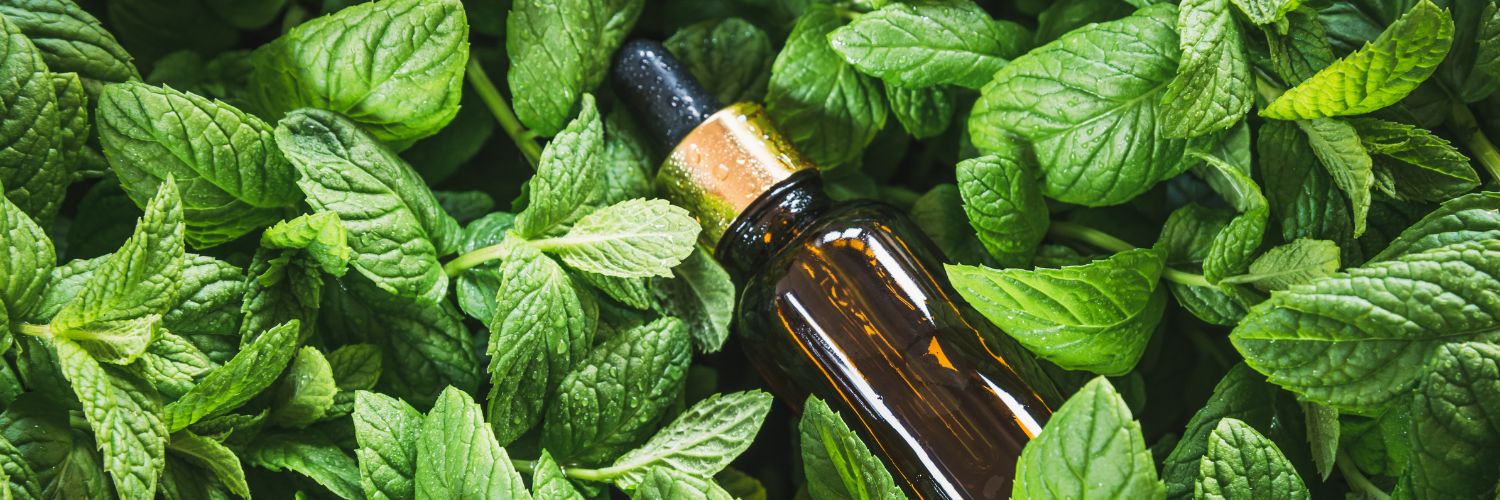Published November 22, 2023 • Updated November 4, 2025
Reviewed by Julie Miller, BA in Language Arts, Editorial Lead, Dr. Killigan’s
TL;DR: Diatomaceous earth (DE) can kill certain insects, but it works slowly and loses effectiveness in high humidity. Dr. Killigan's Dust to Dust Plant-Powered Insect Powder is a faster alternative that targets ants, roaches, fleas, spiders, silverfish and earwigs—often within 24 hours.
Insects slip through the smallest cracks and crevices with audacious determination. If you’re seeing trails in the kitchen or activity under appliances, this guide shows when DE helps—and when Dust to Dust is the faster choice.
How does Dust to Dust compare to diatomaceous earth?
You've probably heard of using DE as an insecticide to control pests, but does it work effectively? And how does it stack up against Dust to Dust? Let's break it down by looking at common household pests.
Can diatomaceous earth kill ticks?

Sometimes—under specific conditions. DE works only when it’s dry and in direct contact with the tick long enough to abrade its outer layer. Outdoors, dew, rain and dense vegetation reduce contact and clump the powder, so results are unreliable. DE is best viewed as a supporting step, not a stand-alone tick solution.
Lab studies show compounds in rosemary oil—camphor and 1,8-cineole—can repel ticks in controlled settings.
Tip: Prioritize tick-specific prevention—landscape cleanup, protective clothing and approved repellents.
Is diatomaceous earth effective against fleas?
Occasionally—but performance is inconsistent and slow. DE works by abrading the flea’s outer layer, which requires dry conditions and direct contact. Flea biology makes this hard: most of the population is eggs, larvae and pupae off the pet in carpets, baseboards and bedding. Humidity also favors flea development and causes DE to clump, so you may wait days for limited results.
A faster alternative: Dust to Dust pairs super-fine silica with plant-based oils to deliver knockdown on surfaces where fleas travel and hide. It is effective on common household fleas, including cat fleas and dog fleas.
Application tip: Apply a light, even layer along baseboards, floor cracks, under furniture and around pet rest areas. Sweep a thin line along carpet edges and into cushion seams where fleas hide. Reapply after vacuuming with a HEPA-filter machine. Do not apply to animals; ask your veterinarian about on-pet control.
For lasting flea prevention, Dust to Dust can be reapplied every few weeks in high-traffic or pet-rest areas, especially during warm, humid months when flea activity peaks.
Does diatomaceous earth kill cockroaches—and how does Dust to Dust differ?
Rarely with consistent success. DE can kill roaches by abrading their waxy outer layer so they dehydrate. In practice, contact is hit or miss, placement is critical and humidity can clump DE and blunt its action. Some roaches avoid treated bands, so results may take days while activity continues.
A faster alternative: Dust to Dust’s silica dehydrates for faster control. Peppermint oil's menthols and terpenes overwhelm a cockroach's smell receptors and deter movement. Rosemary oil's key compounds—camphor and 1,8-cineole—affect cockroach behavior and survivorship in lab settings. Dust to Dust is effective on common species, including American, German and Oriental roaches.

Peer-reviewed work on American cockroaches reports rosemary oil causing 100% nymph mortality across all tested concentrations.
Application tip: Apply a light, even layer along baseboards, behind appliances, inside cabinet voids and at entry points. Reapply after cleaning. For ongoing protection, dust under sinks, near water heaters and in pantry corners—spots roaches frequent for moisture and food residue.
Can diatomaceous earth get rid of ants?
Occasionally—but rarely at the source. DE can dehydrate ants on contact, yet colonies are complex and hidden, making surface treatments ineffective alone. Sprinkling DE where you see a few workers rarely reaches the source.
A faster alternative: Dust to Dust pairs super-fine silica with plant-based oils to deliver knockdown on surfaces where ants travel and follow pheromone trails. It is effective against common household ants, including Argentine ants and odorous house ants.
A Texas A&M University study on red imported fire ants found peppermint oil killed and repelled workers and outperformed tested alternatives. It interfered with pheromone following by disrupting communication, lowering invasion success and reducing movement.
Application tip: Apply a light, even layer along baseboards, floor cracks, entry points and exterior thresholds. Outdoors, apply around the base of exterior walls, patios and near foundation cracks where ant trails often enter the home. Reapply after rainfall or heavy sweeping.
Defend your home and peace of mind with Dust to Dust

Dust to Dust offers more than insect control—it’s a smarter, faster, safer way to protect your home, tackling 100+ crawling insects while staying people-friendly, pet-friendly and plant-friendly when used as directed.
Dr. Killigan’s formula is exempt from EPA registration under FIFRA 25(b), reflecting the use of minimum-risk, naturally derived ingredients [EPA source]. Whether you’re preventing future issues or addressing active activity, Dust to Dust helps you reclaim your space—indoors or outdoors—without harsh chemicals.
Did you know?: Dust to Dust can also be used proactively. Apply it in key areas—like thresholds and under sinks—before pests appear to create an inhospitable environment and prevent infestations from taking hold.
For even greater control, pair Dust to Dust with Six Feet Under Plant-Powered Insect Spray. Six Feet Under kills visible pests on contact, while Dust to Dust continues working along treated surfaces for lasting protection indoors and outdoors. For precision, use the Insect Buster Bulb Duster.
Indoors, Dust to Dust remains effective for weeks to months, depending on cleaning frequency and insect activity.
How long Dust to Dust lasts indoors and outdoors
Dust to Dust’s longevity depends on environment and use. Indoors, it can remain effective for weeks to months, depending on cleaning and pest activity. Outdoors, reapplication may be needed after heavy rain or high humidity. In protected areas like under eaves, furniture or covered patios, Dust to Dust maintains potency longer.
Note on research: Any lab studies cited here describe ingredient-level effects in controlled settings and support the potential of those botanicals. They are not product claims for Dust to Dust.
At Dr. Killigan’s, every formula is developed with transparency and tested for performance, safety and environmental responsibility—so you can protect your home without compromise.





